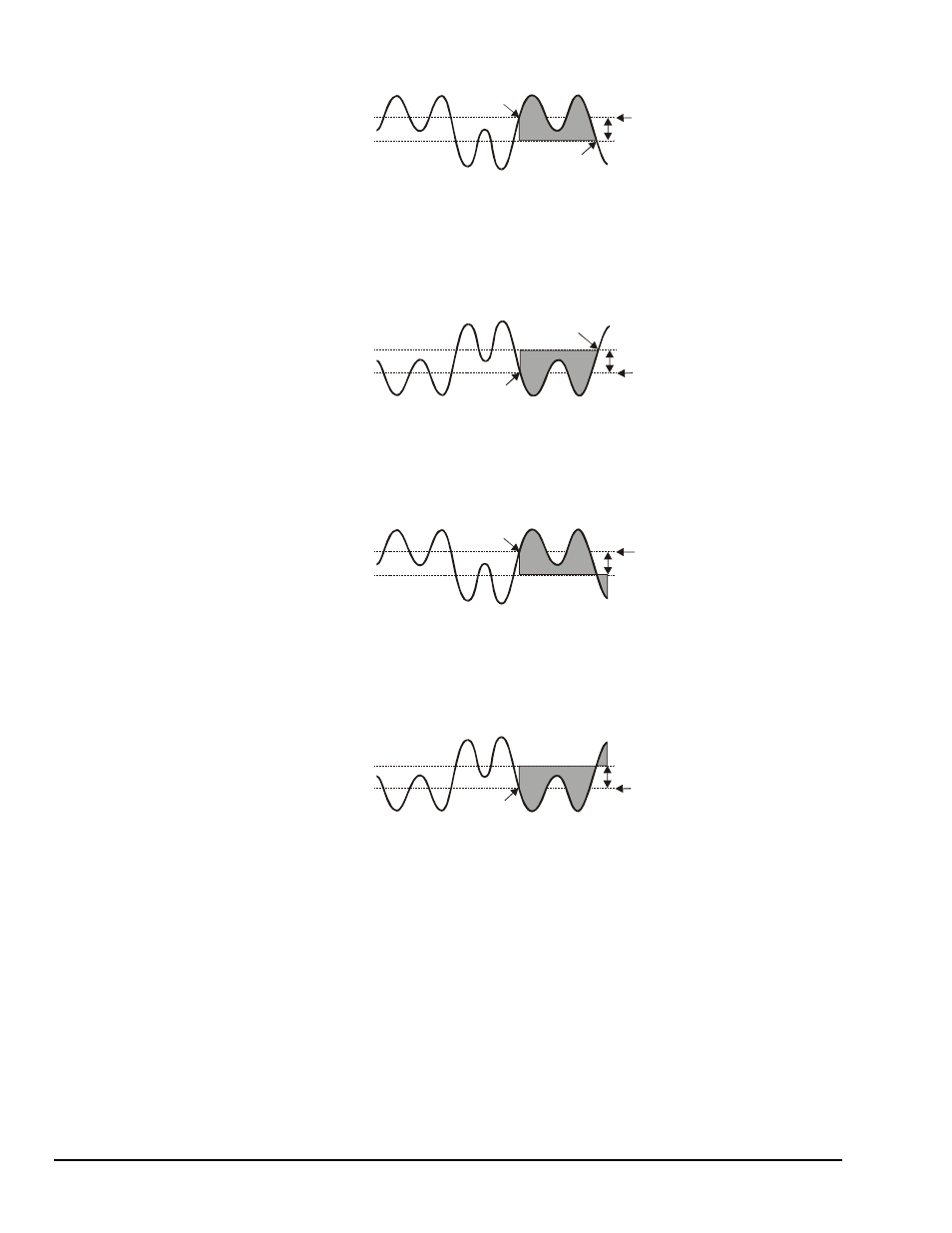Rising-edge trigger, Falling-edge trigger, Rising-edge-with-latch trigger – Measurement Computing WaveBook rev.3.0 User Manual
Page 148: Falling-edge-with-latch trigger, Gger…… 8-14

8-14 Theory of Operation,
6-24-99
WaveBook User’s Manual
Rising-Edge Trigger
Rising slope
Instantaneous duration
Edge initialization
Trigger Level
Hysteresis
Trigger
No
Trigger
This trigger becomes valid after the signal level has been below the hysteresis range and then goes above
the trigger level. This trigger becomes invalid when the signal level goes below the hysteresis range.
Unlike above-level triggering, the channel cannot become valid until the signal level first goes below the
hysteresis range. This prevents the false triggering that would occur if the signal were above the trigger
level at the start of the acquisition.
Falling-Edge Trigger
Falling slope
Instantaneous duration
Edge initialization
Hysteresis
Trigger
Trigger Level
No Trigger
This trigger is the reverse of the rising-edge trigger: the trigger becomes valid after the signal level has been
above the hysteresis range and then goes below the trigger level. This trigger becomes invalid whenever the
signal level goes above the hysteresis range. This prevents the false triggering that would occur with below-
level triggering if the signal was below the trigger level at the start of the acquisition.
Rising-Edge-With-Latch Trigger
Rising slope
Latched duration
Edge initialization
Trigger Level
Hysteresis
Trigger
This trigger becomes valid like a rising-edge trigger: when the signal level goes above the trigger level after
first being below the trigger range. However, the rising-edge-with-latch trigger does not become invalid,
regardless of the signal level, until the acquisition is complete. Rising-edge-with-latch is used to trigger
after the channel has reached the trigger level, rather than just while the channel is above the trigger level.
Falling-Edge-With-Latch Trigger
Falling slope
Latched duration
Edge initialization
Trigger Level
Hysteresis
Trigger
This trigger is the reverse of the rising-edge-with-latch trigger: the trigger becomes valid after the signal
level has been above the hysteresis range and then goes below the trigger level. The trigger remains valid
until the acquisition is complete.
